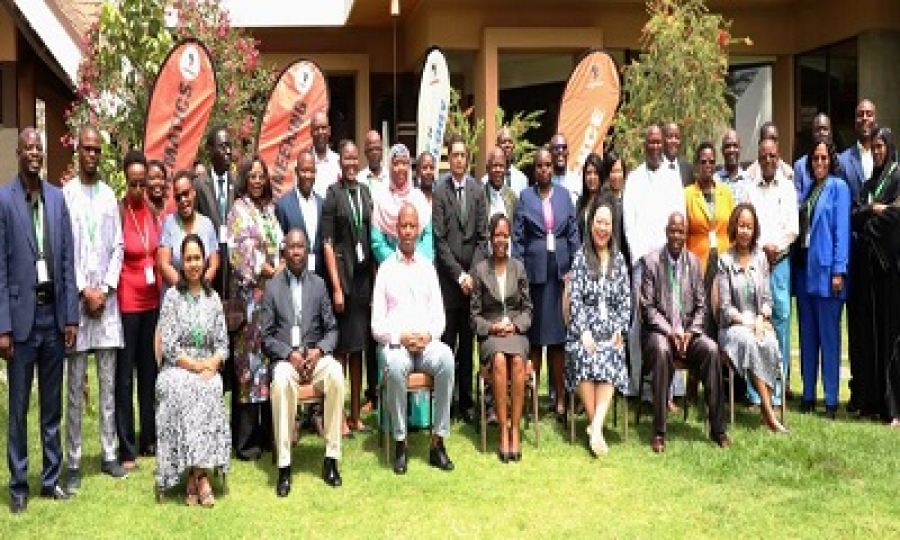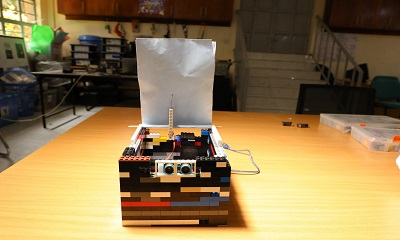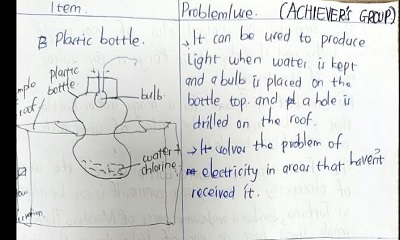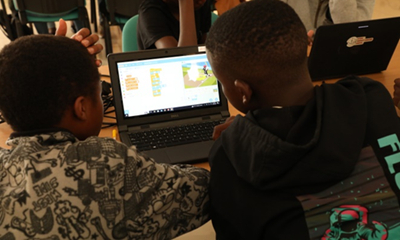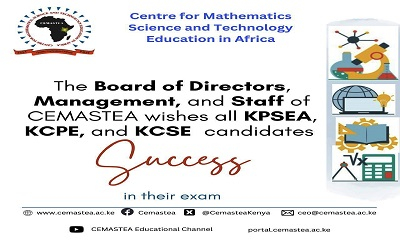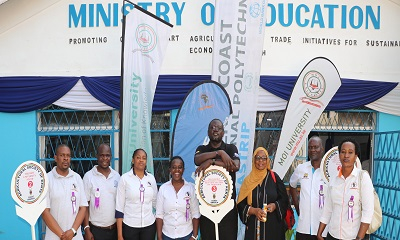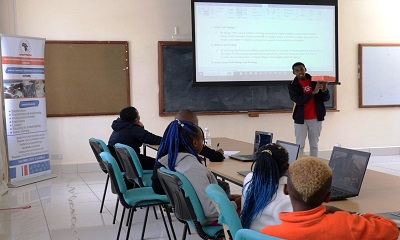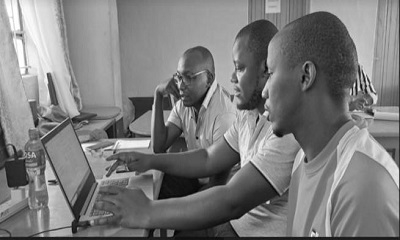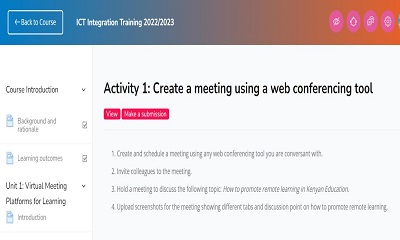CEMASTEA News 172
Children categories
By Mary Sichangi and Ann Mumbi
The Association for the Development of Education in Africa (ADEA) seeks to empower African countries to develop responsive education systems for sustainable development. ADEA achieves these aspirations through thematic-based Inter-Country Quality Nodes (ICQNs) such as the one on Mathematics and Science Education, (ICQN-MSE), a policy dialogue forum for ministers of education that implements programs focused on developing STEM education in African countries.
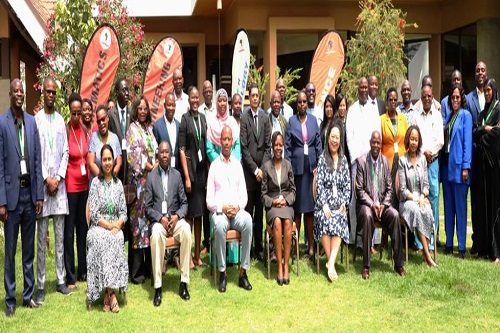
Seated from Right to left: Ms Ngina Kairu, Member, CEMASTEA Board of Governors, Mr. Charles Chacha Mwita, Director Policy, Partnership and East Africa Cooperation Affairs, MOE – Kenya; Ms. Cecilia Ochoa, Representative of LEGO Foundation; Mrs. Jacinta L. Akatsa CEO, CEMASTEA; Mr. Albert Nsengiyumva, CEO - ADEA; Dr Pius Mutisya, OGW, Chair, CEMASTEA Board of Governors and Shalini Mahadowa-Reechaye, Mauritius
The Centre for Mathematics, Science and Technology Education in Africa (CEMASTEA), on behalf of the Ministry of Education [MoE], Kenya, hosts the Secretariat of the Association for Development of Education in Africa’s Inter–Country Quality Node on Mathematics and Science Education (ADEA-ICQN-MSE) since 2014. The Centre in collaboration with ADEA, hosted an international workshop on the status of STEM education in Africa from 18th to 21st September, 2023. The meeting was aimed at harmonising understanding of the status of STEM education in Africa at basic learning based on findings from two studies conducted in primary (2022) and secondary (2020) levels; discuss the proposed Strategic Framework for ADEA’s Inter-Country
Workshop participants included senior ministry of education officials from the headquarters, regions, heads of primary or secondary schools, teacher trainers, teachers of STEM subjects, national curriculum development officers, national examination officers, commissions for science and technology, and quality assurance officers. The delegates were drawn from 17 countries that participated in the two studies. The Secondary study was represented by Botswana, Rwanda, South Africa, Ghana, Kenya, Namibia, Uganda, Angola and Morocco and the Primary study was by Eswatini, Nigeria, Ivory Coast, The Gambia, Kenya, Mauritius, Mozambique, Senegal, Malawi and Rwanda. Other guests included The ADEA Secretariat based in Ivory Coast and The LEGO Foundation.
The opening ceremony was graced by the Principal Secretary (PS), State Department for Basic Education Dr. Belio Kipsang, represented by the CEO-CEMASTEA, Mrs. Jacinta Akatsa. The PS pointed out that it was important to understand the current status of STEM education in Africa. Highlighting the critical role of a robust STEM education curriculum, Dr. Kipsang emphasised the need for investment in building STEM institutions. He informed participants that the Ministry of Education had taken various measures to promote STEM education, including capacity-building programs and the transformation of select secondary schools to model STEM education.
The Chief Guest further emphasised that the action points generated in this workshop had the potential to contribute to the Sustainable Development Goals (SDGs), the Continental Education Strategy for Africa (CESA) 16-25, and the objectives of STEM education. The workshop outcomes will drive substantial progress in STEM education across the continent by aligning regional strategies and fostering increased collaboration.
By Makoba Kizito, Lucy Mwaniki and Rodney Ndemo
CEMASTEA has established a Makerspace to promote innovation and creativity among students, allowing them to work on projects and solve real-life challenges. The space hosts schools from various educational levels, including high schools, junior secondary schools, and primary schools. Students are drawn to technology and robotics, demonstrating a love for STEM through practical application. The space offers hands-on activities using tools and applications such as Scratch, Lego Ev3 robot, MakeyMakey, and Arduino. This allows learners to explore computational design thinking concepts and brainstorm projects to grow and promote imagination, creativity, innovation, and problem-solving among learners. Some projects created in the maker spaces using Arduino Mega are described below.
Smart dustbin
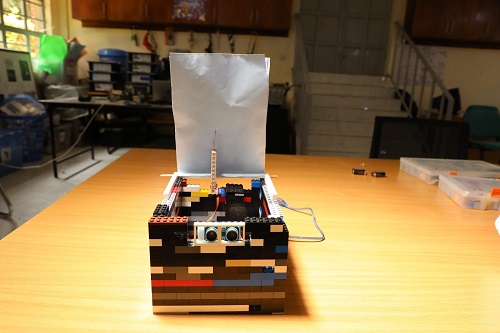
A Lego dustbin with an ultrasonic sensor detects objects less than 10 cm away, prompting the servo motor to open the lid.
Smart calculator
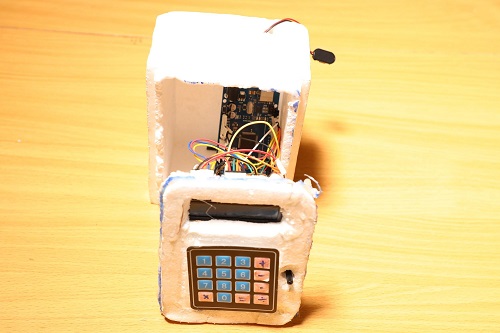
This calculator showcases keypad programming and uses a Styrofoam LCD screen powered by a 9V battery to perform arithmetic and geometric equations.
Smart home security system
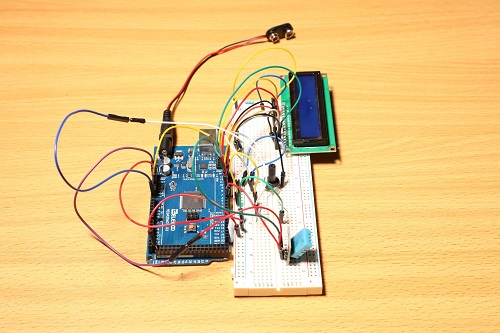
The project used RFID (Radio Frequency Identification) technology to lock and unlock a door using a reader and servo motor, a cardboard box casing, and card input.
Going forward, these experiences could lead to collaborations with other organisations in the STEM space and introduce the concept of developing projects using tools and applications such as Arduino. Teachers and school leaders will be sensitised to sustain these makers’ spaces and related activities.
By Kizito Makoba
The youth is brimming with original ideas, waiting for a tiny spark to kindle them. While raising awareness of the significance of maker spaces in schools, CEMASTEA’s engagement with students from STEM model schools around the country proved that this assertion was accurate. Regarding STEM pedagogies, Education for Sustainable Development (ESD), the creation of maker spaces, and their integration into the teaching-learning process, the Centre has been offering training to teachers and school leadership in STEM model schools. These trainings aimed to create interest in STEM subjects by popularising maker spaces as learning resources to enable learners to develop their creativity, critical thinking and problem-solving skills.
A strategy used to popularise the purposes of a maker space was one whereby teachers and learners engaged in a quick 10-minute STEM challenge ‘Magic Plastic Bottle’. The challenge involved developing as many useful products as possible from a used plastic water bottle. Another requirement for the challenge was that it had to be completed outside, preferably in some shade or under a tree. The usage of the outdoors was intended to demonstrate the versatility of maker spaces. Seeing the innovative products the teams created in under 10 minutes was incredible.
The above ideas are evidence of students’ innovativeness when given guidance through challenges. Schools can foster children's creativity by setting up maker spaces and regularly posing targeted problems for the students to develop solutions. The Sustainable Development Goals (SDGs) are a suitable starting point for framing the maker space challenges. For instance, SDG No. 6 for clean water and sanitation proposes measures to provide access to clean water and enhanced hygienic conditions. The challenge under this SDG can be to create a project that improves access to clean water and a hygienic environment. The challenges should be open to all students in the school, not only to STEM clubs or a particular group of students. We will likely notice an improvement in the student projects during the Kenya Science Engineering Fairs (KSEF) and other events where students display innovations.
The SCAMPER thinking tool was also introduced to assist pupils while they work on their creations. Substitute, Combine, Adapt, Modify (Magnify, Minify), Put to another use, Eliminate, Reverse (Rearrange) is an abbreviation for the SCAMPER. The fundamental idea behind most of our advancements is SCAMPER. The development of the mobile phone serves as a better example of this. The modern smartphone, with modifications, combines a variety of applications into a single unit. SCAMPER also emphasised how innovations are made possible by carefully studying and evaluating current technologies and formulating ideas for enhancing or improving them. Along with SCAMPER, another element that innovators research and draw inspiration from is the mother NATURE through biomimicry or copying nature to come up with solutions.
The combination of SCAMPER and biomimicry would assist teachers in giving students challenges to sharpen their problem-solving and critical-thinking abilities. Students might be challenged to alter a tool or equipment they use every day, for instance, so that it can do a different task or serve a different purpose. Students could also be given a creature, such as a praying mantis, and asked to explore its behaviour and structure concerning bionics. They are then challenged to create something based on specific traits or attributes of the mantis to address a real-life problem. These events should take place in the maker space.
A simple method to start a maker space is by filling it up with reusable items you use every day, such as cardboard boxes, cello tape, strings, cables, cutting tools, and Styrofoam, among others. Keep adding more supplies following the demands of the student's projects. Therefore, let's encourage innovation in our students by providing maker spaces in our schools. By becoming problem solvers or solution providers, students will be prepared for the rapidly changing world.
#Coding4Life
Digital literacy is one of the core competencies in Competency Based Curriculum. The Centre for Mathematics, Science and Technology Education in Africa (CEMASTEA) promotes attainment of digital literacy by organising STEM boot camps during school holidays. CEMASTEA will host the two boot camps from 20-24 November and 27th -1st December 2023.
The 4th STEM Boot Camp Cohort One running from November 20-24th, 2023 themed: "Igniting the Future: Inspire, Imagine, and Innovate" has kicked off.
The opening ceremony of Cohort 1 was graced by Chief Executive Officer, CEMASTEA, Mrs. Jacinta Akatsa represented by Deputy Director CEMASTEA Mrs. Lydia Muriithi. In her remarks, the CEO underlined the importance of training young people for the opportunities and challenges of the 21st Century. She cited that the boot camp would provide participants with the skills they needed for effective collaborative, critical thinking, problem solving, in a rapidly changing world.
In attendance was Hon. Wesley Korir, Advisor to the Director on Africa Initiatives - for CEMC - University of Waterloo in Canada encouraged the participants to uptake STEM subjects seriously to become problem solvers. He emphasised that boot camps of this nature provide a conducive environment to nurture resilience, problem solving and self-efficacy. These are skills that are essential for Africa's development.
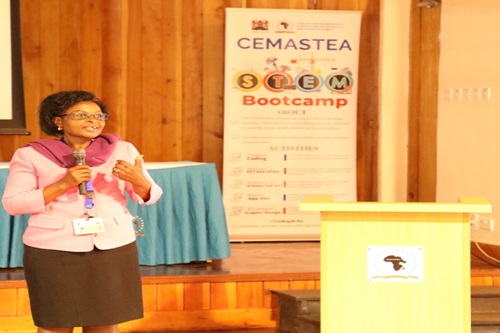
Mrs. Lydia Muriithi, Deputy Director, CEMASTEA speaking to the participants during the opening ceremony of the CEMASTEA STEM Boot camp
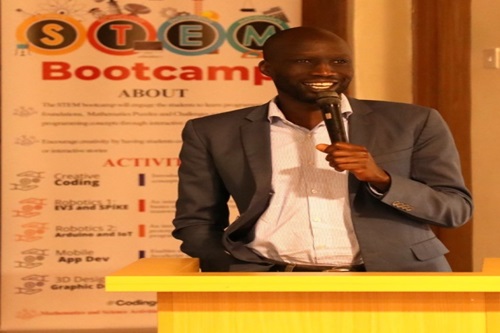
Hon. Wesley Korir - Advisor to the Director on Africa Initiatives - for CEMC - University of Waterloo in Canada addressing the participants during the opening ceremony
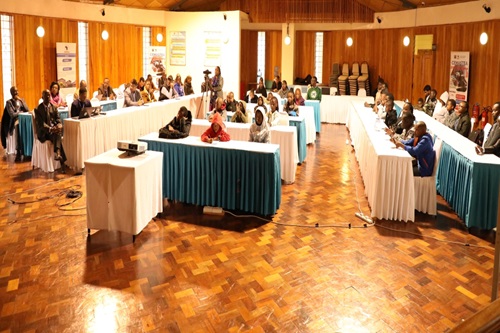
Participants listening to the opening ceremony
The participants will develop skills in Creative Coding, Robotics 1 & 2, Mobile app Development, Graphic Design/3D, Mathematics and Science Innovations. These experiences will spark an interest for the participants to pursue STEM related careers at the tertiary level, enhance students' creativity & innovation and promote a community of problem solvers and critical thinkers.
The boot camp has attracted participants ranging from Grade 3 to high school learners.
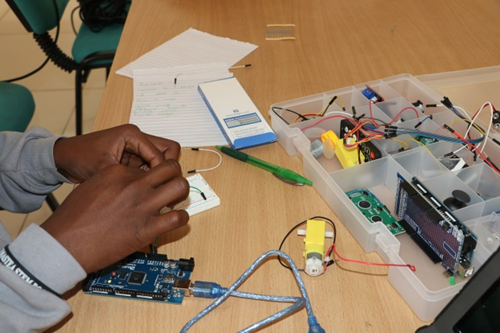
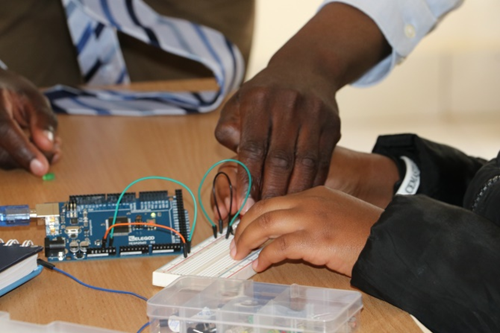
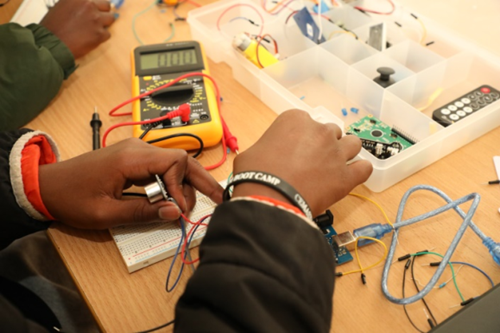
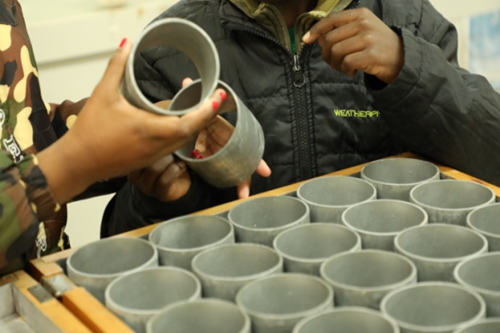
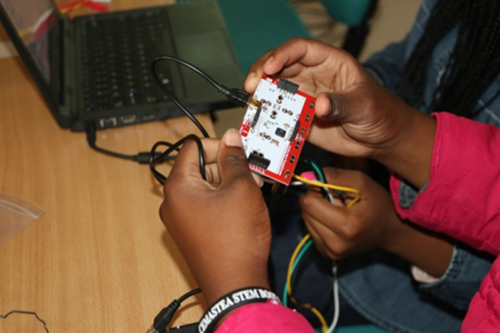
Participants involved in some of the activities in the boot camp
The CEMASTEA STEM boot camp is in collaboration with STEM Impact Centre, UCMAS, I-Start and STEAM Interactive.
The Board of Directors, Management, and Staff of CEMASTEA wishes all Kenya Primary School Education Assessment (KPSEA), Kenya Certificate of Primary Education (KCPE) and Kenya Certificate of Secondary Education (KCSE) candidates success in their examinations.
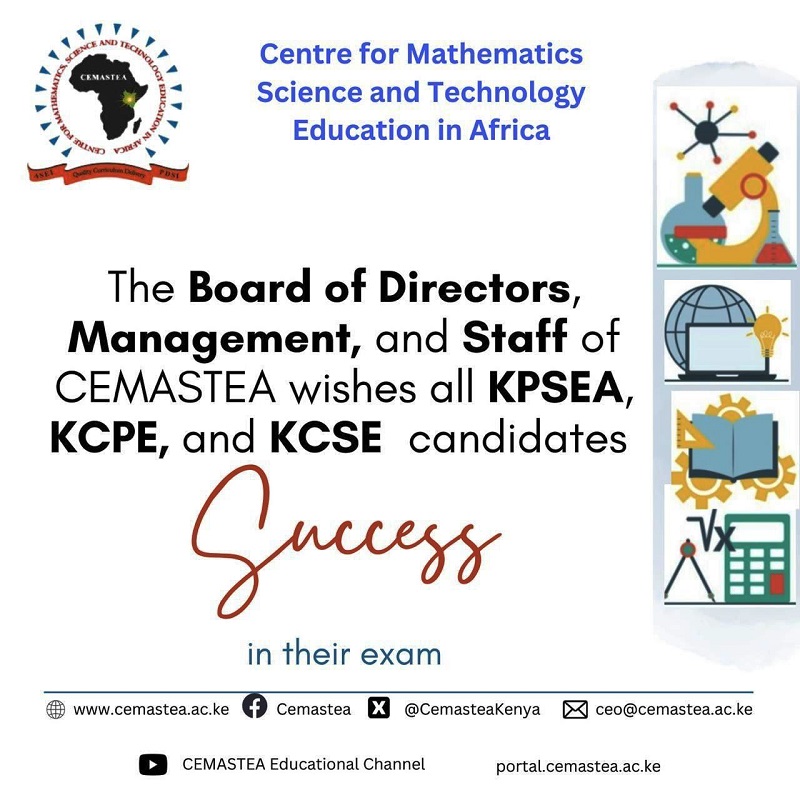
By Makoba Kizito and Winfred Magu
In promoting the spirit of delivering as one, the Ministry of Education (MoE) brought together its affiliated agencies and institutions to exhibit under its stand namely; CEMASTEA, Commission for University Education, Jaramogi Oginga University of Science and Technology, Kenya Coast National Polytechnic, Kwale Teachers Training College, KNATCOM -UNESCO, Moi University and Open University of Kenya. Themed “ Promoting Climate Smart Agriculture and Trade Initiatives for Sustainable Economic Growth’.
The fair provided an excellent opportunity for CEMASTEA to showcase its activities and programmes to the public.
During the event, CEMASTEA engaged members of the public in activities that promoted critical thinking while having fun. This approach was an excellent way to raise awareness about the programmes and activities that the centre offers. By encouraging critical thinking through game based activities, CEMASTEA is instilling a desire for learning in STEM.
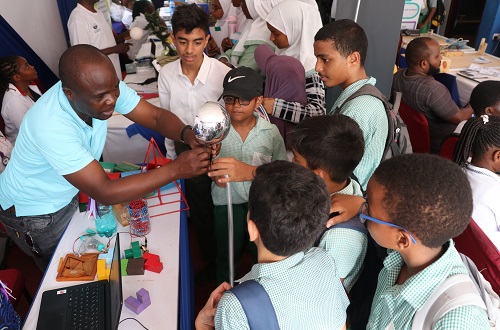
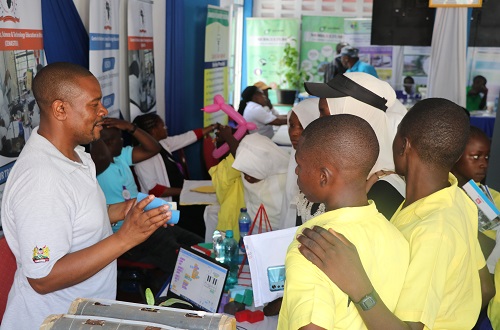
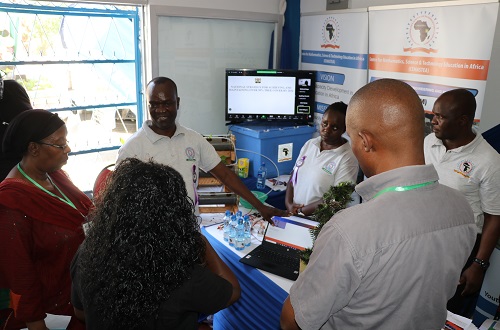
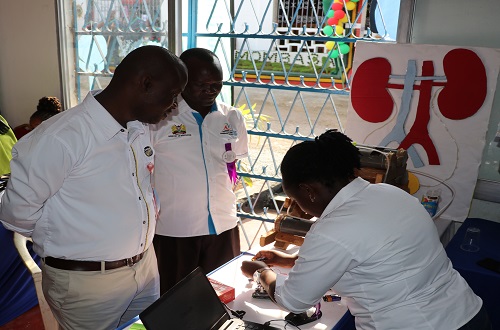
Visitors being taken through some of the teaching and learning resources displayed during the Fair by CEMASTEA Staff
The Ministry of Education won the following awards:
- 2nd position - Best University Stand
- 2nd position - The Stand that best interprets the current show theme education and/or research
- 3rd position - The Stand that best interprets the current show theme education and/or research
CEMASTEA staff poses with the various awards the MoE stand won during the Mombasa International Trade Fair
The awards were a testament to the dedication and hard work that the team had put in to ensure the stand was informative and interactive.
The show took place from 4-10 September, 2023.
#codingislife
CEMASTEA in partnership with STEM Impact Centre have organized the 3rd STEM Boot Camp from August 22nd to August 25th, 2023. With the theme "Igniting the Future: Inspire, Imagine, and Innovate", the boot camp aims to bring together students and learners from Secondary School (Form1-4) and Middle School (Grades 4-8).
The objectives of the Boot camp are to provide an environment for young people to discover their creativity and innovation; encourage more students to pursue STEM related career at tertiary level; enhance students’ creativity and innovation; and promote a community of problem solvers and critical thinkers.
Creative Coding (Basic Coding, Makey Makey, Python, Mobile App Development); Robotics (EV3 LEGO Kit/VEX Kit, Arduino Prototyping); Artificial Intelligence/ Internet of Things- IOT; Graphics Design (3D – Designs; Graphics Designs); and Mathematics and Science Innovations are activities the learners will be taken through.
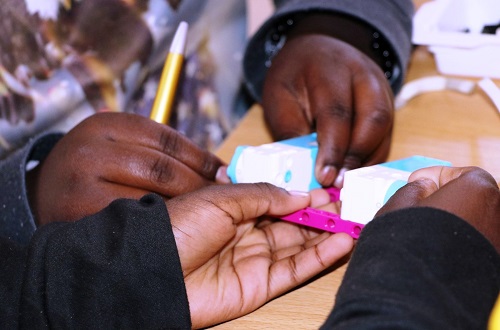
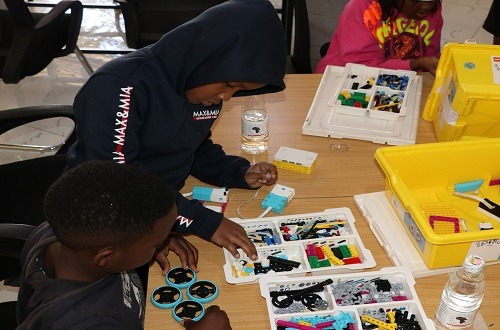
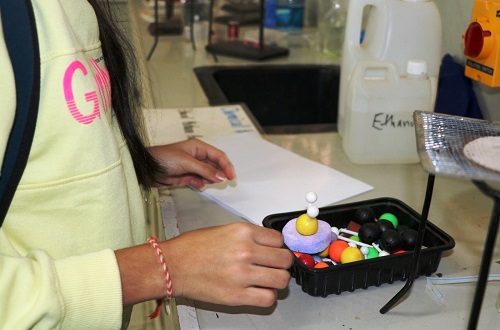
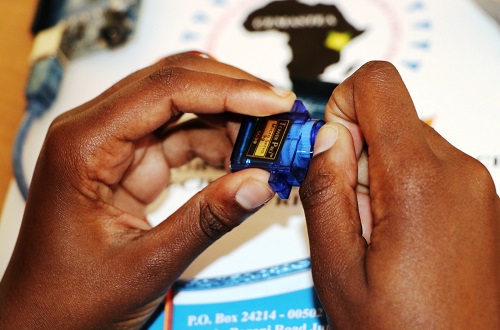
Learners involved in some of the activities in the bootcamp
By Thuo Karanja
During school-based teacher professional development activities, particularly during lesson study, teachers are expected to observe each lesson. A group of biology teachers can collaboratively plan and observe a class implemented by one of them. Pedagogical leaders in a school, such as heads of departments or subject heads, could observe a lesson implemented by teachers in their department. Further, experienced teachers could observe classes implemented by newly recruited teachers during mentoring and coaching. In all these cases, a fundamental expectation is the delivery of feedback. In this article, we focus on the basic tenets of lesson feedback without necessarily getting into the details of pedagogy.
Teachers from Isiolo County collaboratively preparing a lesson
Feedback is a relationship of respect and trust. It is about helping people improve, not about making them feel bad. People want to receive feedback from those they trust. It should not be a senior-junior relationship. Feedback is effective when a teacher knows that the ones giving feedback believe in their abilities, appreciate their current efforts (to plan and implement a lesson) and recognise their growth potential. This way, teachers will most likely view the feedback as constructive and utilise it for improvement. Feedback is better-done face to face. Face-to-face feedback [as opposed to feedback through video conferencing or phone calls] is most effective and dynamic. Face-to-face conversations allow parties to ask questions and dig deeper into the issues at hand and enable contextualising vocal tones, body language and emotions. These are essential aspects of communication.
While a teacher needs to be told the reality of their observed lesson (esp. if one has significant concerns), feedback ought to be presented in a balanced perspective. The observer needs to point out some positives in the lesson, things that impressed you, such as effective learner participation, well-organised and executed lesson activities, logical flow of the lesson or the way a teacher handled a question(s). If some aspects of the lesson did not meet your expectations, frame your discussion to make the teacher feel that; while their current efforts and lesson outcomes are appreciated, there is room for improvement and growth. Focus on specific issues and not generalisations. What was good or needed improvement about the lesson: what did you observe; what was the evidence? Demonstrate to the teacher that you were keen on observing their lesson. With evidence (written notes), tell the teacher what was good and what needs further effort. Don't use statements such as; 'The lesson was nice' [I hear that a lot], 'That was a good lesson', 'great lesson' and 'Nice work'. Suggest to the teacher specific issues and areas to work towards or elements they can focus on replicating. Be truthful [with facts and notes], and don't mislead the teacher into thinking their performance is better than it is. Provide suggestions; 'could you consider doing it this way?‘and avoid using words such as 'never' and 'always' As you make your observations and suggestions, allow the teacher to also talk about their lesson and explain particular perspectives. Please point out the impact of the observations, both positive and negative and how the outcome affects their practice, learner achievement and the well-being of the school.
Do not personalise the feedback; distinguish the teacher ('the person') from their actions and avoid making claims akin to personal attacks. Refrain from using language that is harsh, demeaning or accusatory. Let the teacher know, for example, that you noted some errors in the lesson plan but do not tell them that they lack attention to detail or are careless writers. If a reaction to a learner's response to a question was demeaning, dismissive or disrespectful, point it out from the perspective of its effect on the learner(s). Don't tell the teacher they were rude and abusive to the learner
Finally, feedback needs to be given consistently. It should develop to be a regular practice and pedagogical culture for a school, with expectations, performance standards and indicators. Further, feedback should be timely; delivered immediately after a lesson when ideas are still fresh in the minds of the teacher and the observers. Keep it short and focused on the present and the future. This makes the outcomes of the feedback conversations and outcomes more relevant and actionable. A school could develop lesson observation tools or use existing ones from the Teachers Service Commission (TSC) or from CEMASTEA.
By Paul Waibochi
CEMASTEA has increased by training over 2000 secondary school teachers of all subjects using its Learning management system (LMS) domiciled at the CEMASTEA portal (portal.cemastea.ac.ke). This successful ICT training conducted in 25 Counties had participants self-enrol for the course, work on activities and, after grading and authorisation by the facilitators, download an online certificate. The majority of teachers accessed the system using their mobile phones. This course was self-paced, with teachers doing much of the training on their own time with minimal guidance from the facilitators.
In the past, CEMASTEA has been training teachers on ICT integration in teaching and learning using a blended mode. The centre leveraged virtual platforms such as Zoom, Microsoft Teams, Google Meet, Big Blue Button, and Google Classroom. The LMS can enrol over 100,000 participants doing different courses and simultaneously access learning materials. CEMASTEA plans to use the portal for most of its training programmes.



